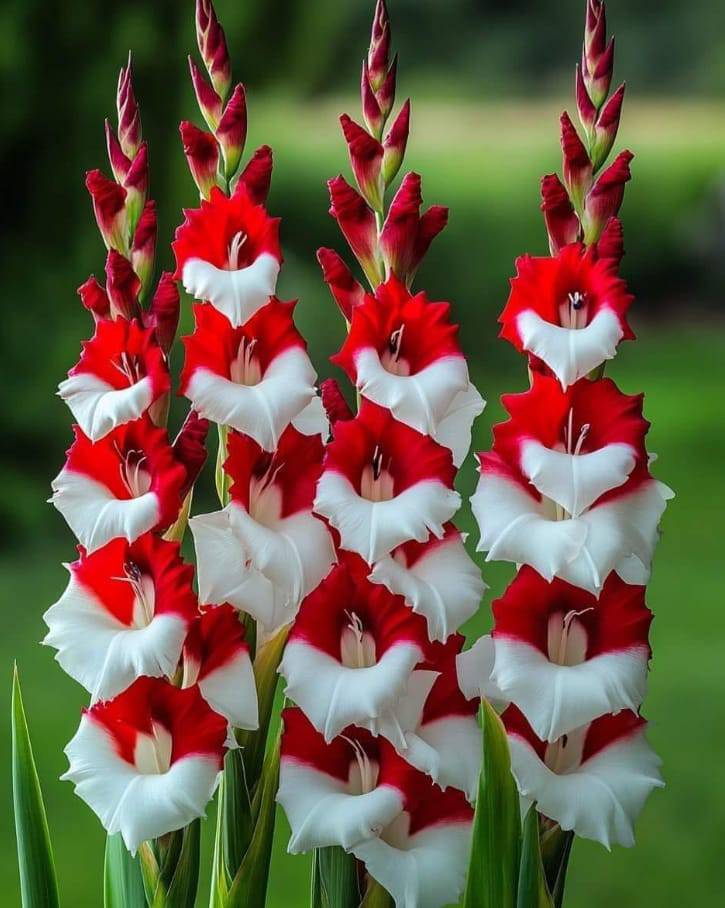ADVERTISEMENT
The Gladiolus hybrid, with its stunning red and white blossoms, is a showstopper in any garden. Known for its tall, sturdy spikes of vibrant flowers, the gladiolus adds height, drama, and a touch of elegance to garden beds and floral displays. These vibrant flowers not only make bold statements but also serve as great cut flowers for bouquets, bringing beauty indoors.
Here’s everything you need to know about growing and caring for Red and White Gladiolus to ensure they thrive and continue to dazzle throughout the season.
1. Light Requirements
Gladiolus plants love the sun and thrive in full sunlight. For optimal growth and flowering, plant them in a location that receives at least 6-8 hours of direct sunlight each day. Full sun encourages strong, upright growth and vibrant blooms. Without enough sunlight, gladiolus may grow weak, produce fewer flowers, or develop a less vibrant color.
If you’re growing them in a shaded area, their growth may be slower, and their flowers may not develop as richly as they do in direct sunlight. A sunny garden spot, especially in the morning and early afternoon sun, is ideal.
2. Watering Needs
Gladiolus plants require consistent moisture, especially during their blooming period. However, they do not like their roots to sit in water, so ensure the soil is well-drained. Water your gladiolus regularly but avoid overwatering. The soil should be kept moist, but not soggy, as excessive moisture can lead to root rot.
Water deeply at the base of the plant to reach the roots. During dry spells, it may be necessary to water more frequently. If planted in containers, ensure the pot has good drainage to prevent waterlogging.
3. Soil Preferences
Red and White Gladiolus thrive in well-draining soil that is rich in organic matter. They prefer slightly acidic to neutral soil, with a pH of around 6.0 to 7.0. Good drainage is essential to prevent the bulbs from rotting.
To improve soil drainage, consider amending it with organic compost or well-rotted manure. This will also help retain some moisture during hot weather. Avoid heavy clay soils that tend to retain too much water, as this can lead to bulb rot and poor growth.
4. Temperature Tolerance
Gladiolus plants thrive in warm temperatures, making them ideal for spring and summer gardens. The best growing temperature for gladiolus is between 65-75°F (18-24°C), although they can tolerate higher temperatures if they have adequate water and protection from intense midday sun.
Since gladiolus is a tender perennial, it may not survive frost. In colder climates, gladiolus is often grown as an annual, or the bulbs are dug up after the growing season and stored indoors over winter for replanting the following spring.
5. Humidity Considerations
Gladiolus plants are not particularly sensitive to humidity but will appreciate moderate to high humidity, especially during the blooming period. In regions with very dry air, increasing humidity around the plants by misting the leaves or using a humidifier can help prevent stress during flowering.
In areas with high humidity, ensure the soil is well-drained to prevent fungal infections, which can be common in overly moist conditions.
see next page
ADVERTISEMENT
